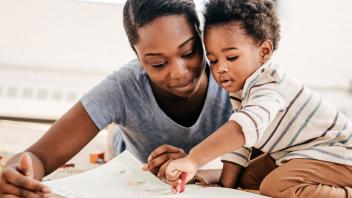Most children learn to read by age 7. Learning to read is built on a foundation of language skills that children start learning at birth — a process that is both complicated and amazing. Most children develop certain skills as they move through the early stages of learning language.
The following list of such accomplishments is based on current research in the field, where studies continue and there is still much to learn. As you look over the list, keep in mind that children vary a great deal in how they develop and learn.
If you have questions or concerns about your child’s progress, talk with your child’s doctor, teacher, or a speech and language therapist. For children with any kind of disability or learning problem, the sooner they can get the special help they need, the easier it will be for them to learn.
From ages 3-4, most preschoolers become able to:
- Enjoy listening to and talking about storybooks
- Understand that print carries a message
- Make attempts to read and write
- Identify familiar signs and labels
- Participate in rhyming games
- Identify some letters and make some letter-sound matches
- Use known letters (or their best attempt to write the letters) to represent written language especially for meaningful words like their names or phrases such as “I love you”
Excerpted from: DeBruin-Parecki, A. with Perkinson, K. & Ferderer, L. (January, 2000). Helping Your Child Become A Reader. U.S. Department of Education.
